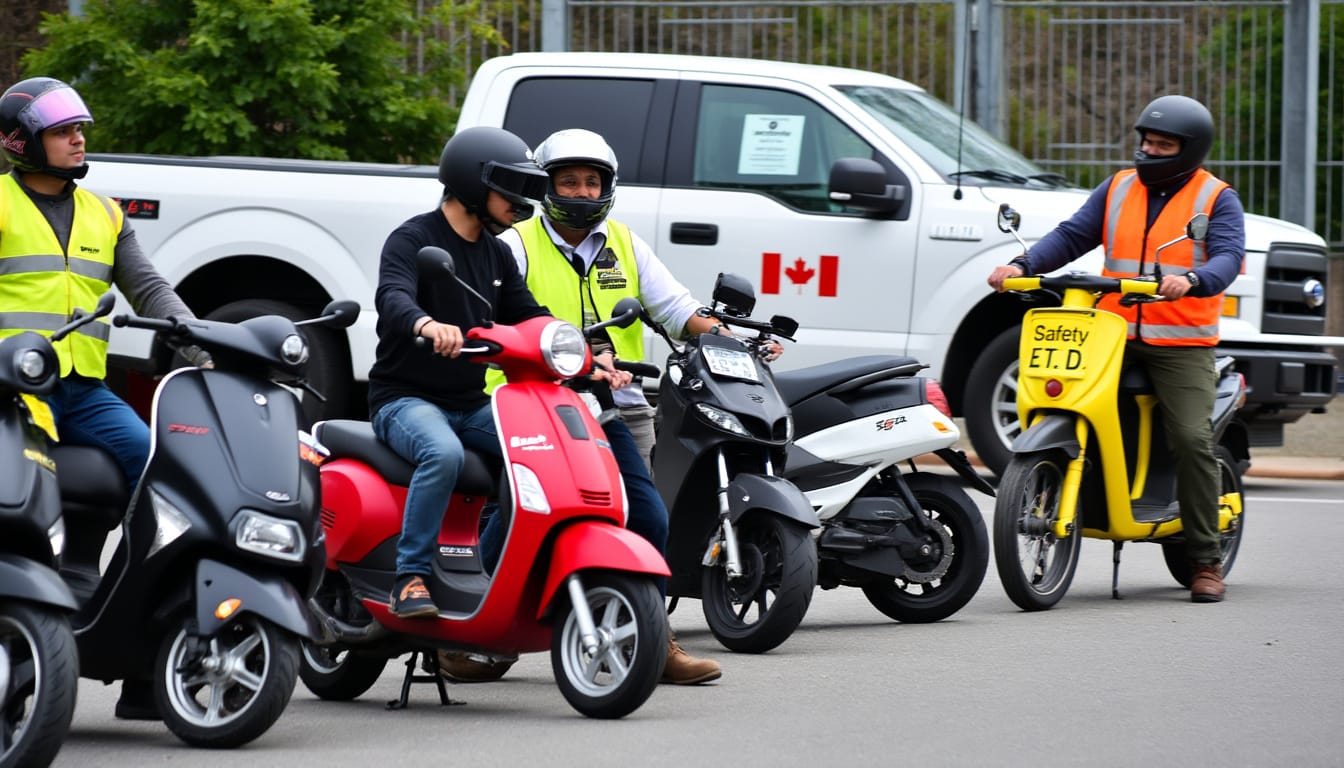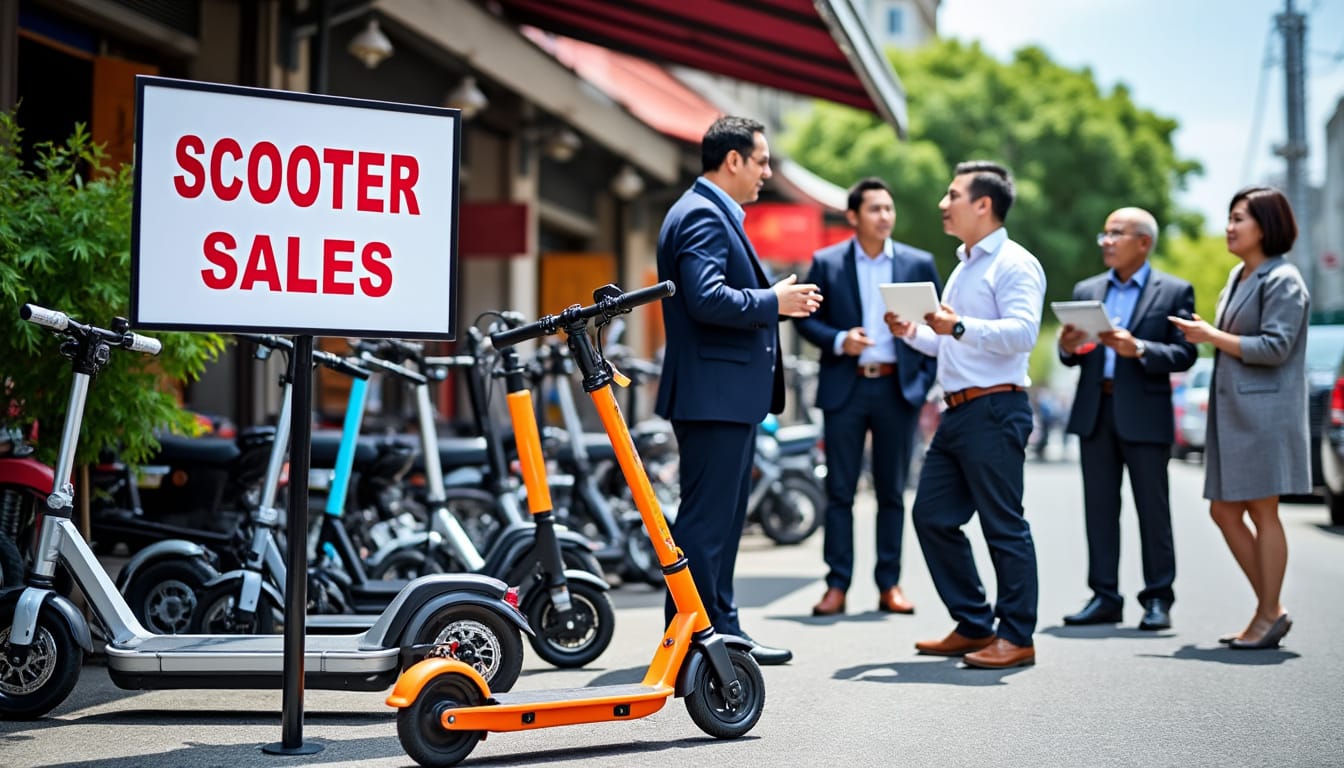Non-compliant scooters: what will be the consequences of the "fake motorcycles" banned in Quebec?

Since the announcement of the ban on non-compliant scooters and motorcycles in Quebec, a wave of change is blowing across the roads. The decision, aimed at improving road safety and vehicle compliance, raises many questions. The "fake motorcycles" that have proliferated in recent years must now make way for vehicles that meet the current standards. But what will be the consequences for users and stakeholders in the sector?
The stakes of scooter compliance in Quebec
The compliance of motor vehicles, particularly scooters, plays a crucial role in road safety. Non-compliant vehicles, often referred to as "fake motorcycles," were largely produced without adhering to the Canadian Motor Vehicle Safety Standards (CMVSS). This raises issues both in terms of user safety and environmental impact.

The law requires that any vehicle used on public roadways complies with these safety standards. However, many non-compliant scooters were still on the road, evading checks. The introduction of stricter regulations is therefore aimed at reinforcing safety on the roads.
The vehicles affected by the ban
The ministerial decree outlines a series of characteristics that define non-compliant scooters and motorcycles. Here are the main criteria:
- Absence of a national safety mark.
- Maximum speed exceeding 32 km/h.
- Equipment not compliant with automobile safety legislation.
- Vehicles based on a set of tires resembling a motorcycle.
This ban is also a response to the growing concerns of citizens regarding the safety situation associated with these non-compliant vehicles. With an increasing number of accidents attributable to these machines, taking action has become essential.
| Compliance Criteria | Compliant Vehicles | Non-compliant Vehicles |
|---|---|---|
| Maximum speed | 32 km/h or less | Greater than 32 km/h |
| Labeling | Compliance label | Absent |
| National safety mark | Present | Absent |
| Type of vehicles | Legal and registered devices | "Fake motorcycle" devices |
These new restrictions are implemented in order to protect road users and reduce the risks of accidents. It is crucial that each user is aware of the specifics of their vehicle in order to avoid penalties.
The impact on users and the two-wheeler market
The lives of scooter and motorcycle users will change profoundly with this new regulation. The consequences of the ban are already visible in the landscape of the two-wheeler market in Quebec.

In the days immediately following the announcement of the ban, a large number of non-compliant vehicles were put up for sale on online resale platforms. This has raised questions about the future of these scooters and their market value.
Economy and resale of scooters
The circulation of non-compliant scooters had been practically banned for many years, but their resale was a lucrative market due to low costs. Now, users find themselves stuck with vehicles whose legality is being questioned. This raises several concerns:
- Loss of value: Non-compliant scooters no longer have market value, as their registration is impossible.
- Consumer confidence: Potential buyers will be wary of used vehicles, increasing caution in transactions.
- Access to micro-mobility: Users seeking alternative transport solutions will be limited in their choices.
This sector is also affected by the rise of environmental concerns. Scooter users, often seen as an eco-friendly transport solution, may be penalized by these new regulations. A reflection on the future of these vehicles could lead to an evolution of the models offered on the market.
How will the regulation be enforced?
The enforcement of this new regulation will be monitored by police forces, notably the Montreal Police Service (SPVM) and other peace officers throughout Quebec. They will need to identify non-compliant vehicles using visual and physical criteria, which will pose new challenges for law enforcement.

The protocol for identifying vehicles affected by the ban relies on checking for the presence of adequate labels and safety marks. This inspection process aims to facilitate the work of police officers, even though concerns have been raised about the implementation of these measures.
Control measures and penalties
Penalties for non-compliance with these regulations can range from fines of 300 to 600 dollars. The importance of adhering to the regulations is paramount to avoid legal complications, and users must be made aware of the potential consequences of non-compliance.
- High fines: Users of non-compliant scooters face significant financial penalties.
- Incentives for registration: Users will be encouraged to opt for compliant models that can be registered.
- Reduce police overload: Having clear regulations helps reduce time spent checking vehicles.
The effective implementation of the regulation is essential for its credibility. The success of applying these changes will also depend on the collaboration between regulatory authorities and road users.
| Type of penalty | Amount of fine |
|---|---|
| Use of an unregistered scooter | 300 $ to 600 $ |
| Driving a non-compliant vehicle | 300 $ to 600 $ |
| Failure to comply with officers | 500 $ and more |
Road safety policies will become stricter starting January 1, 2025, which could encourage more users to comply with the new standards.
Reactions from the sector and future perspectives
The reaction to the new regulations regarding non-compliant scooters varies among stakeholders. Users, resellers, and parts of the industry that rely on two-wheelers are in contrasting situations.
The main concern expressed by users is the inability to use or sell their scooters, leaving a gap in the micro-mobility market. Voices are also emerging to denounce this ban. For example, figures in the electric transport industry, such as former minister Daniel Breton, express that the regulation could be contrary to environmental goals.
Impact on innovation and the future of scooters
The need to comply with stricter standards could lead to an evolution of the scooter models offered on the market. This means that manufacturers may need to innovate to adapt to new requirements. Companies could turn to more advanced technologies, thus promoting clean and sustainable micro-mobility.
- Promotion of innovation: Manufacturers are encouraged to develop models compliant with the standards.
- Evolving market: The rise of vehicles that meet safety standards could also see new players emerge in the market.
- Environmental benefits: The shift to compliant scooters could also help reduce CO2 emissions.
These changes could transform the perception of scooters in Quebec and strengthen initiatives for sustainable transport.
Conclusion on the ban of non-compliant scooters
With the ban on non-compliant scooters and motorcycles in Quebec, a new road landscape is emerging. This initiative clearly aims to ensure safety conditions and comply with existing standards. However, the impacts on users, the two-wheeler market, and the transport industry raise crucial questions for the future. Collaboration between authorities, users, and manufacturers will be essential to navigate these significant changes.
Leave a Reply

Articles relatifs